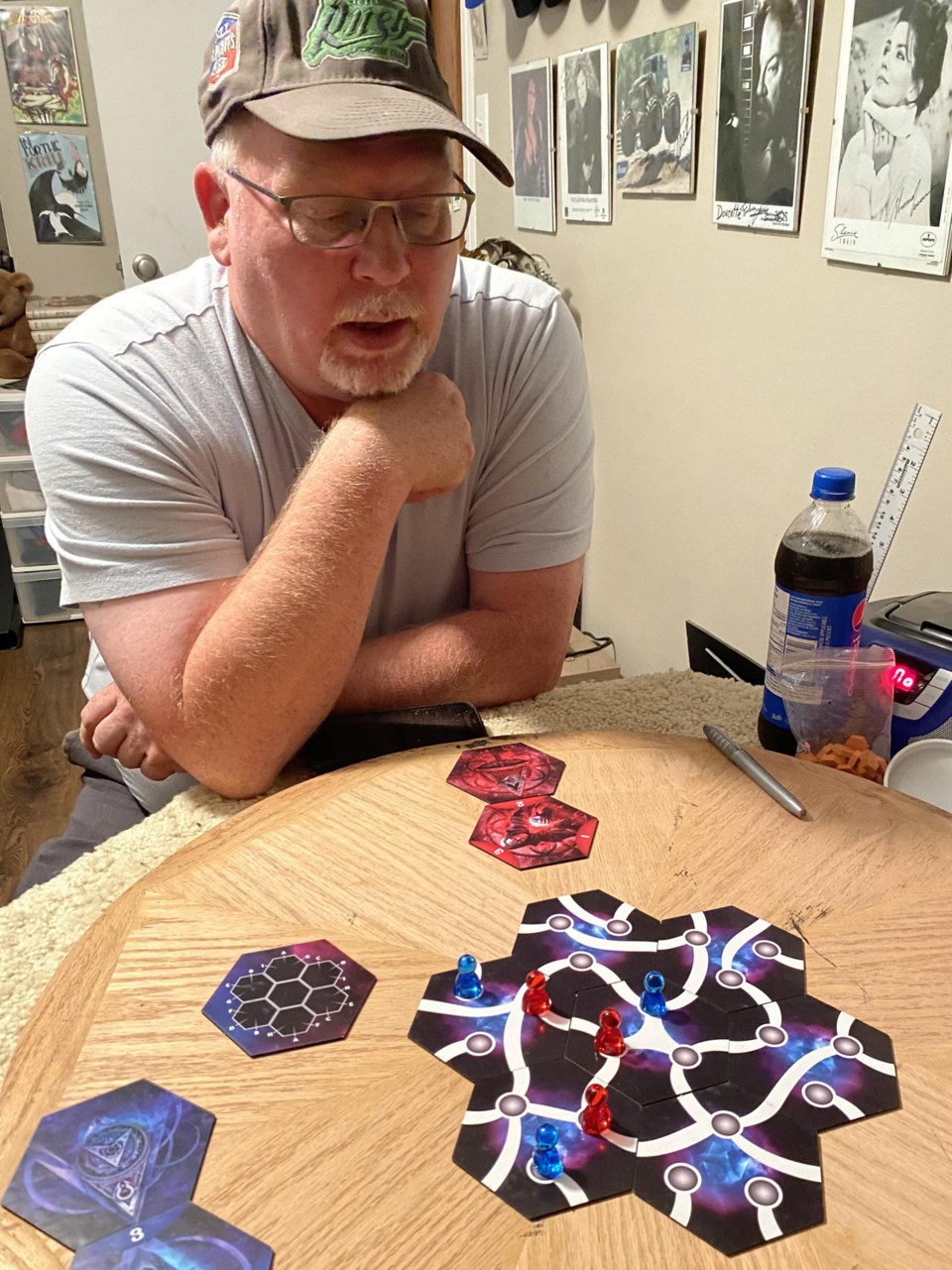YORKTON - The art on a game box adds nothing to how well the game plays, but it can be a critical element in attracting attention.
Take Triax, a small box, self-published work by Rian Logan, the artwork of gothic western wizard is amazing – Logan is the artist too. It would draw our little group for a closer look even in a crowded game store.
That’s the first step in gaining a game player.
But, what would the investigating gamer find with Triax?
Well, designer Logan stated, “I think players can expect a deeply strategic game of feinting, blocking, and reevaluating their own tactics.
“Unlike chess, long-term strategies don’t work here as the board can literally change underneath your feet. It’s also a game where a particular strategy doesn’t just simply win every time.
“Despite designing this game, I rarely win a game of it, and I think that’s a good thing.”
So what did we think when we gave this one a whirl?
Well in reading the rules we weren’t expecting a lot to be honest. It seemed a bit pedestrian in reading the rule set, a game likely to play quickly but without a great deal of tension.
Boy was that expectation way off base.
The game plays on a board of seven hexagonal pieces, each with three spots where pieces can sit after a move. So it’s a confined space, but since the hexagonal pieces can be positioned in different ways, and each is two-sided, there is a lot of potential variation in the lay out.
Then the pieces don’t just move within the hex grid. They can ‘warp’ off the board emerging basically directly opposite. Wow! this mechanic really changes thing,
Forget an opponent can ‘warp’ a piece and they likely jump to a win – getting their three wizard pieces onto the three points of a single hex.
The game got better with warping.
But then Logan added in the ability that three times in a game a player can forgo moving to ‘warp reality’ which allows the rotation of one of the six out hexes to a different orientation.
This is a hugely cool aspect to the game, and rare will be the win where you have not used the ability – but be careful, holding one in reserve might be the only way to stop a winning move too.
The game, maybe because it seems simple has a sort of built in mind trap. You can get easily hyper-focused on positioning for a win on the next turn, that you miss the warp twist and move that gives the opponent a win.
Analyzing what an opponent can do with his turn – you can move three spaces in any combo with the three pieces – is critical.
So back to the designer for some thoughts.
“Triax started, as most of my games do, with the aim of creating something new,” offered Logan. “I love abstract games (Checkers, Chess, Go) and I wanted to make it simple to learn and yet highly replay-able.
“I love hexagons and knew that I wanted to incorporate them into the game.
“I started playing with how three pieces could move around seven hexagons, and came up with the core of the game.
“After that it was just figuring out the movement rules and the win condition.
“I noticed right away in early play-testing that it could be played fairly quickly like checkers or, if you really put thought into your moves and anticipated your opponent’s moves, it would play more like chess.”
A comparison to chess might be a big stretch, but Triax is easily the equal of a good checker contest.
So in the designer’s mind what is the best element of the game?
“The double sided hexagons create a playing board which is different every time, with over 30 million combinations, I don’t suppose anyone will ever play the exact same game of Triax twice in their lifetime,” said Logan.
“I hope I’ve created a game where players can get more out of it, depending on how much they put in. “For example, in early play test sessions. All of the games were 10 to 15 minutes. It wasn’t until I took the game to a ‘spiel and let some real strategic thinkers go at it that I saw exceed 45 minutes.”
And there were tweaks along the way.
“Originally you could ‘Bend Reality’ as often as you liked, and with two highly competitive players, the game could possibly go on forever, so that was what led to the spell counters, and only being able to ‘Bend Reality’ three times per game,” said Logan.
But, what is the most unique mechanic within the rules?
“There’s a lot I could point out here but I suppose the fact that the game and the strategy really begins with laying out the game board hexes,” he said. “As the first player places the first hex they have to consider how each piece might move into the center hex, and must ensure that their opponent cannot pull off a first turn win.”
In the ‘strategy’ section of the rules it suggests avoiding a lay-out which could lead to a first turn win. It should be a rule and move on. It makes sense and stops potential arguments when a gamer goes for the sure win.
That’s a niggly thing, but is likely the biggest hole in a game which really surprised when it hit the table – a surprise in a very good way.
There is a lot of ‘game’ in this small box that invites you in with great box art.
Only a two-player, but as an abstract strategy game free of luck, this is a game that is a candidate for top-five game come year end.






